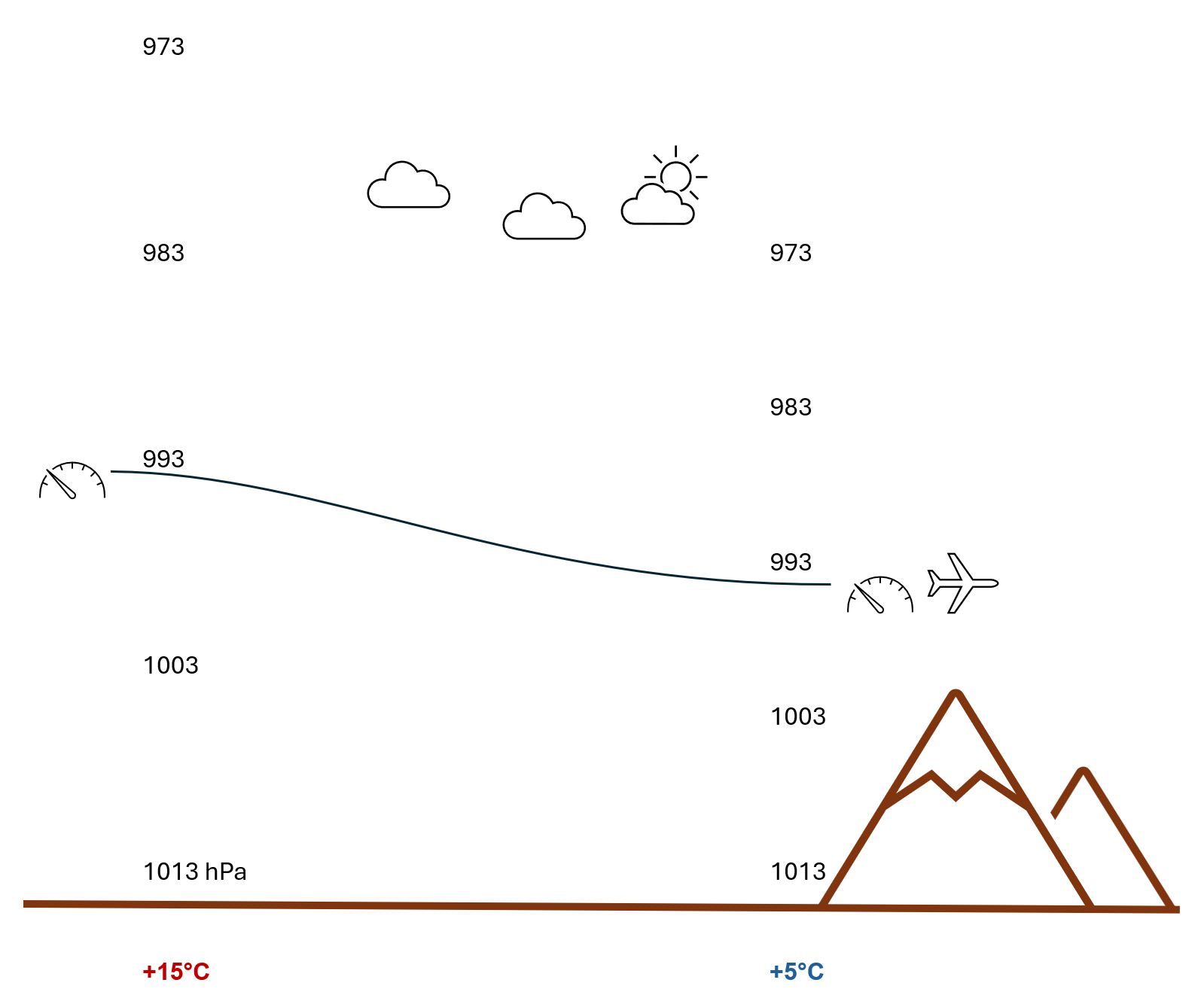Ref: FAA Pilot's Handbook of Aeronautical Knowledge 2023 (faa-h-8083-25c) Page 8-4, column 2, paragraph 3 (including figure 8-3) through page 8-5, column 1, paragraph 1.
As a background to my question, the statements on Page 8-4, column 1, paragraph 3 through column 2, paragraph 1, related to flying from a high-pressure area to a low-pressure area without adjusting the altimeter make perfect sense (it is implied that the pilot maintains the plane’s indicated altitude in the process). Clearly, the atmospheric pressure drops in the process and, as a result, the true altitude decreases if constant indicated altitude is held constant. Said another way, if the true altitude were maintained in the process, the altimeter would display a higher indicated altitude as it would register the lowered atmospheric pressure.
By similar logic, I would think that traversing from a warm air mass to a colder air mass would result in entering into a denser air mass. A denser column of air would therefore produce increased atmospheric pressure. If one were to maintain the same indicated altitude during that part of the flight, I would think that the true altitude would increase. Similarly, increased atmospheric pressure would show a lower indicated altitude if a constant true altitude were maintained through that portion of the flight.
Clearly, my logic in the above paragraph shows me to have my head on upside down! The question is, what am I missing in the big picture to have drawn such an erroneous conclusion? Does it have to do with where the temperature is warmer / colder than (adjusted) standard; i.e., at sea level or at the altitude at which the plane is located (my assumption)? It has been suggested that I am thinking about Boyle’s Law and that is giving me an incorrect perspective on the situation. But, even in free air, won’t colder air have increased density and therefore greater air pressure at the bottom of the air column compared to warmer air?
I’m totally confused and suspect I should just stay on the ground and taxi around!

